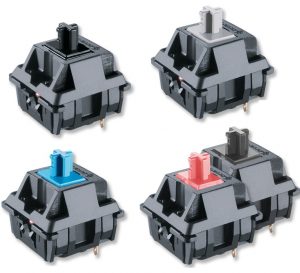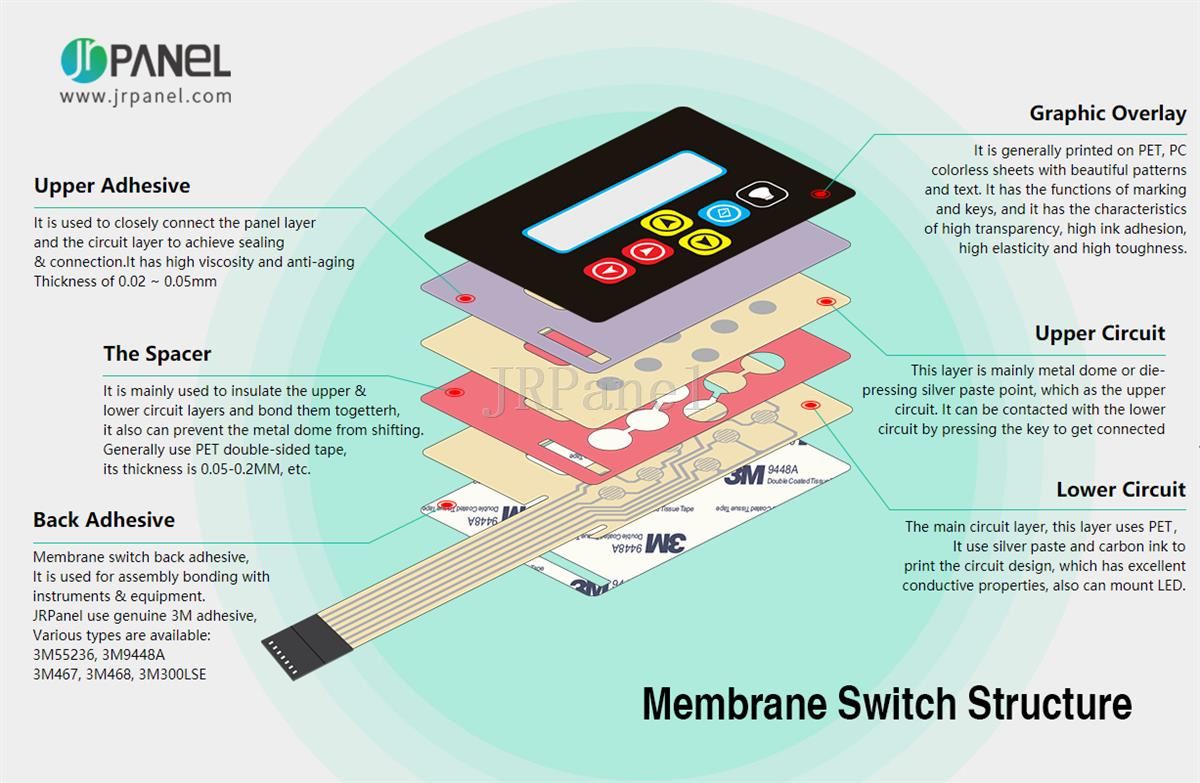Just How to Ensure Longevity and Reliability with a High-Quality Membrane Switch
Just How to Ensure Longevity and Reliability with a High-Quality Membrane Switch
Blog Article
Understanding the Functionality of Membrane Switches Over for Customer Interface Instruments
The capability of membrane layer switches over represents a substantial development in interface style, combining efficiency with visual adaptability. These buttons operate through a multi-layered framework that translates individual interactions into electrical signals, permitting both portable formats and resilience versus environmental elements. As sectors progressively focus on user experience, recognizing the subtleties of membrane layer button technology ends up being essential. What ramifications do these advancements hold for future applications, and how might they redefine customer interactions across different devices?
What Are Membrane Layer Switches?
Membrane switches are innovative interface tools that promote user communication with electronic equipment. These versatile components consist of several layers, including a graphic overlay, spacer, and a printed circuit layer. The style enables a seamless integration into numerous electronic gadgets, boosting both the aesthetic and useful facets of interface.
Membrane layer switches are frequently used in a variety of applications, from family devices to commercial machinery and clinical devices. Their building normally features a thin account, making them a suitable selection for compact designs. The responsive comments offered by these switches can be crafted to fulfill particular user choices, ensuring effective communication between the user and the tool.
Resilience is an additional considerable benefit of membrane buttons, as they are immune to dirt, wetness, and chemicals, which enhances their life-span in demanding atmospheres. Additionally, these switches can be tailored in terms of shape, size, and visuals design, enabling branding and user-specific functions. In general, membrane changes represent a useful solution for improving individual experience in electronic gadgets, integrating capability with aesthetic appeal in an effective way.
Exactly How Membrane Layer Switches Over Job
Operating on an uncomplicated principle, membrane layer switches over make use of a split building and construction to sign up individual input properly. Each button contains numerous layers, consisting of a printed circuit layer, a spacer layer, and a top graphic layer, which are made to interact flawlessly. When a user presses the leading layer, it compresses the spacer layer, bringing the conductive components of the circuit layer into call with each various other.
This get in touch with produces a shut circuit, indicating the device to execute a details feature. The style permits for different configurations, consisting of responsive feedback, which can enhance the user experience by offering a physical sensation upon activation. The products used in membrane switches commonly consist of adaptable substrates, such as polyester or polycarbonate, which make certain toughness and durability versus damage.

Secret Benefits of Membrane Layer Buttons

Another considerable advantage is their compactness. Membrane layer buttons are slim and lightweight, which enables manufacturers to conserve area in their devices without compromising performance. This function is particularly advantageous in applications where weight and quantity are critical factors to consider.
Furthermore, membrane buttons are resistant to dirt, dampness, and chemicals, boosting their sturdiness. This resilience prolongs their lifespan and minimizes the demand for frequent substitutes, leading to expense savings gradually.
In addition, the responsive responses provided by membrane layer buttons can be enhanced to boost user more info here interaction. They can include functions such as elevated switches or audible clicks, improving functionality and customer experience.
Applications Throughout Industries
User user interface devices utilizing membrane layer switches are prevalent in a wide array of markets, showcasing their adaptability and functionality. Membrane Switch. In the clinical sector, membrane layer buttons are important to devices such as diagnostic tools and client tracking systems, where their longevity and convenience of cleaning are important for maintaining health criteria. In a similar way, in the vehicle market, these switches are used in dashboard controls and infomercial systems, providing a streamlined and contemporary user interface for users.
Furthermore, the consumer electronics field benefits from membrane buttons in home appliances and handheld tools, where portable style and user-friendly interfaces improve individual experience. Industrial applications likewise take advantage of membrane changes for control board in equipment and automation systems, stressing their effectiveness and resistance to extreme atmospheres.
In the aerospace and defense markets, membrane layer switches are used in cabin controls and devices, where dependability and efficiency under severe conditions are extremely important. Furthermore, the gaming sector progressively includes membrane layer buttons in controllers and game equipments, contributing to an appealing individual experience. Generally, the versatility of membrane switches over allows their extensive use throughout various sectors, highlighting their relevance in modern user interface style.
Future Patterns in Membrane Change Modern Technology

Furthermore, the use of advanced materials, such as polycarbonate and polyester films, is anticipated to increase, providing boosted longevity and resistance to ecological stress factors. These products add to the general durability of membrane layer buttons, making them suitable for harsher industrial applications.
Furthermore, the consolidation of wise innovation, including IoT connectivity, will certainly make it possible for membrane switches to communicate with other gadgets and systems, assisting in a more interactive user experience. This trend aligns with the growing demand i thought about this for wise devices across numerous fields, from healthcare to consumer electronic devices.
Finally, modification options are expected to broaden, permitting makers to develop bespoke options customized to certain customer needs and choices. These advancements will place membrane layer buttons as necessary components in the development of user redirected here interface technology.
Conclusion
In final thought, membrane layer switches stand for an essential improvement in customer interface modern technology, providing a trustworthy and flexible service for diverse digital applications. Their split construction promotes portable style, while attributes such as tactile feedback improve customer communication. The toughness versus ecological variables better strengthens their utility across multiple markets. As improvements in product science and touch sensing innovations proceed, the performance and applicability of membrane layer buttons are expected to expand, reinforcing their relevance in modern-day digital devices.
Report this page